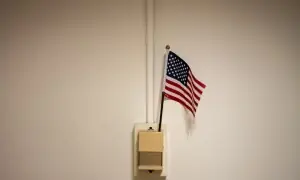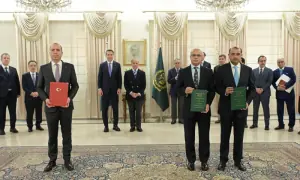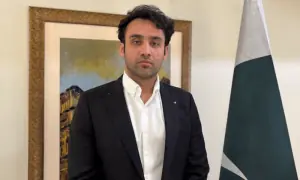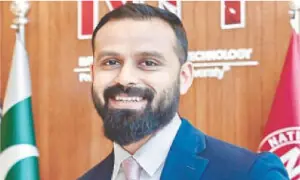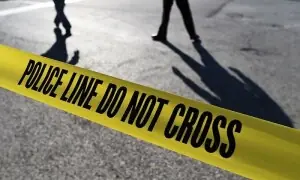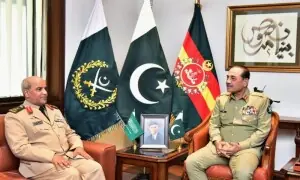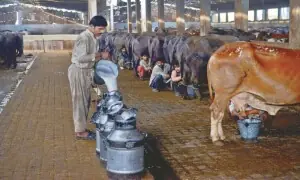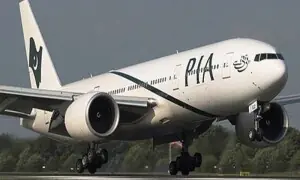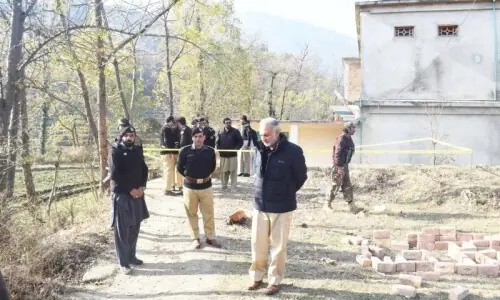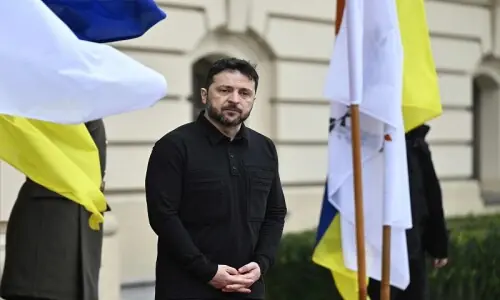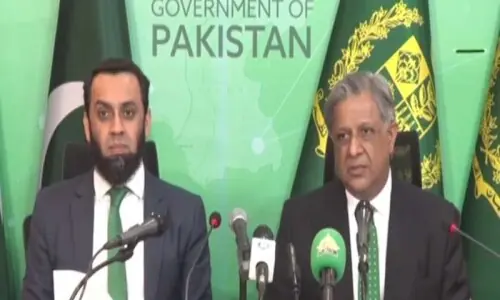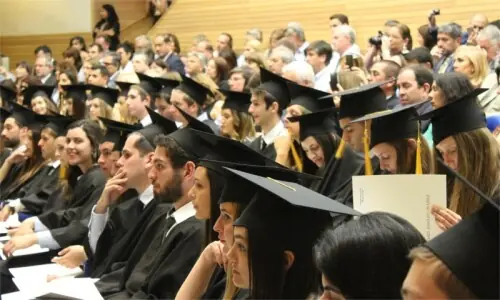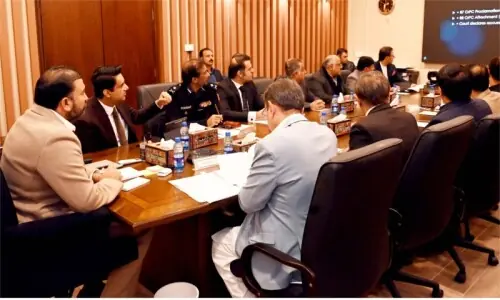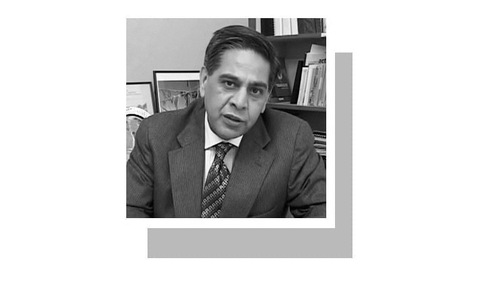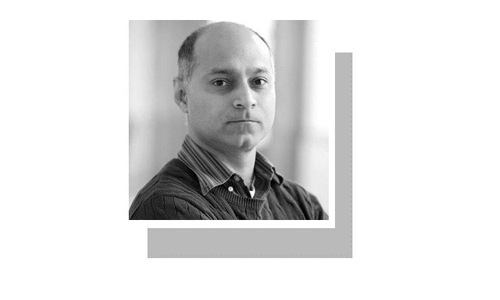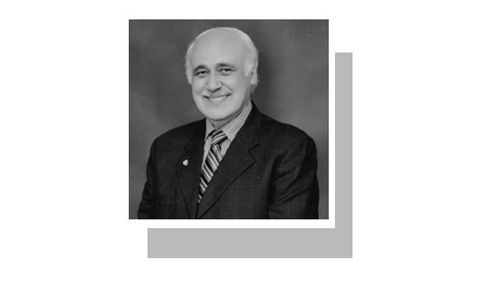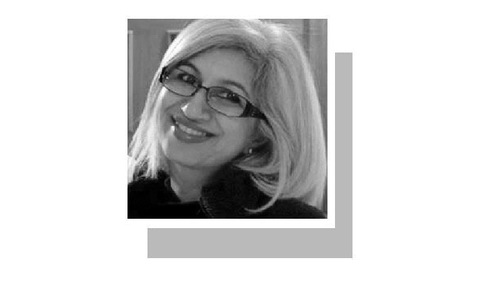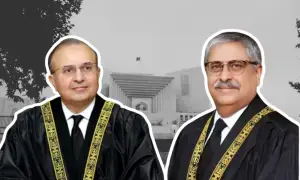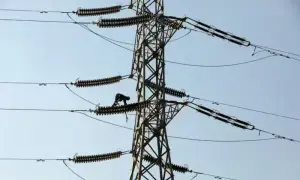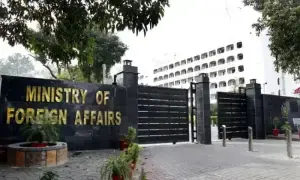This article was originally published on July 18, 2015.
Akhtar Balouch, also known as the Kiranchi Wala, ventures out to bring back to Dawn.com’s readers the long forgotten heritage of Karachi. Stay tuned to this space for his weekly fascinating findings.
All preparations had been made in the Eid Gah (prayer ground) for Eid day prayers. Attentive bureaucrats are overseeing the prayer arrangements. Prayer time is fast approaching. The head of the country, however, is yet to arrive. All serving eyes longingly share stares, silently asking one another; when will he come?
One low-ranking officer brought the country head’s Aide-de-Camp’s attention to the hour; it was later than late. The ADC did not pay any heed. The low-ranking officer tried yet again to remind the ADC that the time for the prayer had long arrived. The ADC, now with a face that clearly stated he was holding himself from completely losing his cool, gave the time-reminding prayer enthusiast a look of displeasure and told him to tell the prayer leader that the prayer will only start when the sahib is here.
The officer made it a marching task and went straight to the prayer leader.
To the ADC’s displeasure, the officer could again be seen rushing back towards him. It had only been a few minutes. “The prayer leader has refused to delay the prayer, sir,” he said to the ADC. Now, the look that the ADC had on his face was of worry, and not displeasure.
While the ADC was still trying to figure out the next step, he heard the cracking noise of the loudspeakers followed by an announcement asking prayer participants to stand up and form horizontal queues so the prayer could begin. The sitting, waiting audience suddenly rose to righteousness.
The prayer had begun. Everyone was erect, body and soul, in the audience of the one and only God, thanking him for the joyous occasion.
The ADC ran to the central entrance of the Eid Gah only to see that the official vehicle of the country head was parked right outside. He ran to the in-charge of the security detail and asked, “Where is he?” The country head was standing in the last queue, praying like a commoner. The ADC had by now lost it. He could only wait until the prayer ended. So he did.
When the prayer ended, the ADC went to the country head and told him that he had asked the prayer leader to delay the prayer but could not get him to agree. The ADC must have been expecting that the country head would have an outburst and would surely punish the prayer leader for his disobedience. Instead, the country head was all praise for the prayer leader.
Those were the good old days when the country heads prayed with groups of people and the country’s only news channel Pakistan Television would later tell the whole world how the country head had ‘mingled with the crowds’. The crowds, of course, were mostly law enforcement personnel without their uniforms.
It was the first Eid day prayer after Pakistan had come into existence.
The country head who prayed in the last queue as a commoner was none other than Quaid-i-Azam Muhammad Ali Jinnah. The prayer leader was Moulana Zahoor-ul-Hasan Dars. In later times, in the same Pakistan, a revolutionary moulavi (Muslim religious leader) – who is quite impressed by a certain Gullu Butt – had delayed the Friday prayer for half an hour so that one Mr Sharif could comfortably stand in the first row.

It has often been said that Karachi’s first Eid Gah is located on Bandar Road, opposite Jamia Cloth Market. However, history has news for everyone. The oldest Eid Gah in Karachi is located in Lyari. It is on the Faqir Muhammad Khan Darra Road.

Siddique Balouch, one of the most known journalists in the country, shares that this Eid Gah from Lyari is the oldest in Karachi and it was established during the days of the Mir ruler in Sindh. People like the leftist leader Ghous Bakhsh Bizenjo, Sir Haji Abdullah Haroon, Ghulam Hussain Khaliq Dina, Sir Ghulam Hussain Hidayatullah, Muhammad Ayoub Khuhro and Saaien G. M. Syed have all offered Eid day prayers at this very Eid Gah.
My journalist friend Rafique Balouch shared some interesting insight on this particular Eid Gah. He says that the Eid Gah was also a centre of political activities during Ayub Khan’s martial law. Here, there would be protest gatherings against Ayub Khan now and again, when the protest leaders would exit the Eid Gah, they would be arrested by the police only to be dropped off at the outskirts of Karachi and always in the areas adjoining Thatta.
There was no public transport in those days. As a result, those who would participate in the protests would have to return home on foot. They would only reach their destinations after a two, three day long walk. Most of them would be scared of participating in any protest activity after that.
Renowned historian Gul Hassan Kalmati writes in his book, Karachi: Sindh Kee Marui:
[The Eid Gah]… is two and a half centuries old. It was established in the days when the Kalhoro dynasty reigned over Sindh.
However, Usman Damohi disagrees. In his book, Karachi Taareekh Kay Aaeenay Main, he writes that after the British had conquered Sindh, the first Eid Gah to be established was the central Eid Gah on Bandar Road around 1879-80.
I decided to visit the Lyari Eid Gah and ask about in regards to its history. My journalist friend Arif Balouch was very helpful in the matter. He got me in touch with Abdul Aziz Balouch who still lives in the Eid Gah in Lyari.
His father Moulavi Shah Daad Hout had remained the prayer leader here for a very long time. He died aged 106. I went to the Eid Gah to see Aziz Balouch. The main entrance held a signboard. It had the name of the madrassa on it: Jamia Tarseel Al-Qur’an Siddiquia Eid Gah Trust.

I entered the Eid Gah and then called Aziz on his mobile. He came out of his house after a few minutes. He smiled at me and then informed me that it was prayer time, and he must be excused. I told him I'd wait for him.

On the right was a mosque where people were headed for prayer. On the left, an empty area was being used as a football field by some children quite religiously as well. I also spotted a water cooler by the mosque.

I thought instead of just waiting for Aziz, I may as well take a look around.
It was the 28th day of the month of fasting, Ramazan. By the water cooler, I spotted two teenagers drinking water out of a glass chained to the cooler. I went close and asked if the water was cold. They showed me a thumbs-up, saying, “bamboo.”
Now, bamboo is of course English for baans. However, it is also Sindhi and Balouchi for bamboo. Often in colloquial Balouchi, calling something bamboo means it deserves high appreciation. You have to get the pronunciation right, though. It is more bumb-boo than bamboo. Practice a bit, I’d say.
I enjoyed a glass full of the cold bamboo water. It was refreshing. It was only in Lyari that I found cool water during this month and time of the day. Had it been some other place in Karachi, those two boys would have been on news for taking a beating for violating the Ramazan code, and yes, Zia-ul-Haq’s Ramazan Ordinance.
After a little while, Abdul Aziz came out of the mosque and we got talking about the Eid Gah. He told me that the place had its political history and identity, too.
He added that the Eid Gah was famous for funeral prayers in absentia of those who lay down their lives for the restoration of democracy. According to him, funeral prayers for slain Afghan leader Dr Najeebullah and Pakistan’s late Prime Minister Zulfiqar Ali Bhutto were also held here in absentia, along with those for many others.

I asked him why there was a madrassa here now. He said it was there to save it from land grabbers. Apparently, the Oqaaf department was very cooperative towards some groups who wanted to take over the land.
Since this piece of land is worth millions of rupees, many groups have been interested in building a commercial centre here. Even the last Qazi of Karachi, Qazi Noor Muhammad’s son Qazi Munir had taken over the land to build a storage facility here. Later, people forced him out through protest.
Upon exiting the Eid Gah, a man asked us: “What is the matter?”
I asked him the same question: Why is there a madrassa here now? When and why was it built?
He told me his name was Gul Muhammad. “My baap used to pray here,” he said. The Balouch of Lyari do not like it when you use the terms abba, baba or papa for their fathers.
Gul Muhammad continued: “I, too, pray here.This madrassa here was built by the people of the neighbourhood. You know, all the kids here in this madrassa are from Waziristan and Sarhad (he meant KP). Now, the Eid Gah is safe but if these kids keep living here, it will be trouble for us, you know.”
Gul Muhammad told me that there are about 250 students in the madrassa. I said to him, “But the place looks empty.” Gul replied, “They’ve all gone to Waziristan to celebrate Eid.”
Outside the mosque, a stall was established to distribute jihadi literature to the people coming out of the mosque.
—Photos by Akhtar Balouch | Translated by Ayaz Laghari from the original in Urdu here



